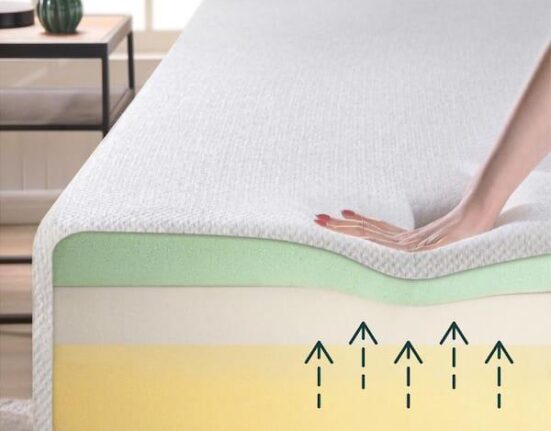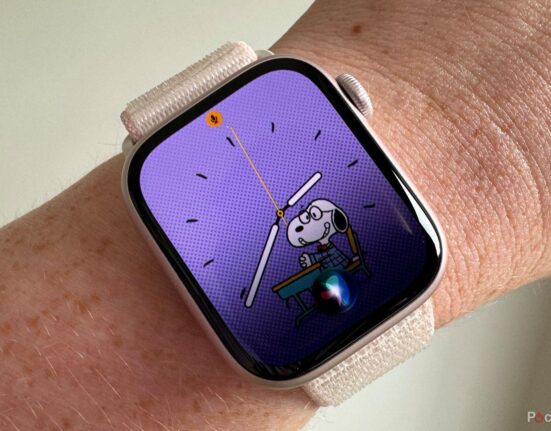In the shimmering depths of a swimming pool or the rolling waves of an open water swim, athletes have long sought ways to measure their performance and enhance their training. Enter the age of fitness trackers, a technology that has revolutionized how swimmers monitor their progress and optimize their routines. But with an overwhelming array of devices on the market, the question arises: how do these trackers fare in the aquatic environment? In this article, we dive deep into the world of fitness trackers designed specifically for swimming, exploring the critical role of waterproof ratings and the performance capabilities that set the best apart from the rest. Join us as we navigate through the features, functionalities, and essentials every swimmer should consider when choosing a companion for their aquatic journeys.
Understanding Waterproof ratings in Fitness Trackers for Swimming
When considering a fitness tracker for swimming, it’s vital to decode the various waterproof ratings that manufacturers provide. Most fitness trackers adhere to the International Protection (IP) rating system, which indicates how impervious the device is to water and dust. Ratings such as 5 ATM or 50 meters signify that the tracker can withstand pressures equivalent to a depth of 50 meters underwater, making it suitable for recreational swimming. in comparison, a rating of 3 ATM allows for splashes or rain, but shouldn’t be taken into deep water. Understanding these specifications can save users from potential damage while maximizing their swimming experiences.
Different brands have unique labeling methods related to their waterproof capabilities. Here are some common ratings and what thay mean for swimmers:
| Rating | Water Resistance Level | Suitable Activities |
|---|---|---|
| 1 ATM | Water-resistant to 10 meters | Splashing, light rain |
| 3 ATM | Water-resistant to 30 meters | Showering, shallow swimming |
| 5 ATM | Water-resistant to 50 meters | Recreational swimming |
| 10 ATM | Water-resistant to 100 meters | Snorkeling, water sports |
Being aware of these ratings helps users choose wisely based on their swimming habits and ensures their fitness tracker performs optimally in aquatic environments. ultimately, the correct waterproof rating enhances the experience while protecting the device from water damage.

Essential Features to Look for in Swim-Ready Fitness Trackers
When scouting for the perfect fitness tracker tailored for swimming, there are key attributes to keep in mind that will elevate your aquatic workouts. Waterproof ratings are paramount; ensure the device boasts at least a 5 ATM rating, allowing it to withstand depths of up to 50 meters. Additionally, look for features like automatic stroke recognition to track your swimming style, whether freestyle, breaststroke, or butterfly. This not only enhances your training but also provides insightful metrics about your performance.
Another critical aspect is lap counting and interval training capabilities. Many trackers come equipped with the ability to record laps and break down your swim sessions into manageable intervals, giving you a detailed understanding of your endurance and speed. moreover, consider looking for devices with heart rate monitoring specifically designed for underwater use. This function provides real-time data, which is invaluable for optimizing your workouts.Here’s a swift comparison of some notable features in popular swim-ready fitness trackers:
| Fitness Tracker | Waterproof Rating | Stroke Recognition | Lap Counting | Heart Rate Monitor |
|---|---|---|---|---|
| Tracker A | 5 ATM | Yes | Yes | Yes |
| Tracker B | 10 ATM | Yes | Yes | Yes |
| tracker C | 5 ATM | No | Yes | No |

Top Fitness Trackers for Swimming: Performance Insights and Recommendations
Finding the right fitness tracker for swimming can significantly enhance your aquatic workouts by providing detailed performance insights. Waterproof ratings are crucial,as they determine how deep the device can go and for how long.Look for trackers rated at least 5 ATM, which means they can withstand pressures equivalent to a depth of 50 meters, suitable for competitive swimmers. Notable options include:
- Garmin Swim 2 – Designed specifically for swimmers, featuring advanced metrics like SWOLF (a measure of swim efficiency).
- Fitbit Charge 5 – Offers overall fitness tracking with swim-specific insights and stylish design.
- Apple Watch Series 7 – Its Swim Tracking mode provides in-depth stats and integrates seamlessly with other apps.
performance tracking in swimming is more than just counting laps; it involves evaluating distance, stroke count, and even rest intervals to optimize your training. Many of the latest fitness trackers offer connectivity options allowing data to sync with your smartphone for real-time feedback and enhanced analysis. A helpful comparison of these top contenders can be seen in the table below:
| Device | Waterproof Rating | Key Features |
|---|---|---|
| Garmin Swim 2 | 5 ATM | SWOLF, Stroke Type Detection |
| Fitbit Charge 5 | 5 ATM | Heart Rate Monitoring, Sleep Tracking |
| Apple Watch Series 7 | WR50 | Heart Rate, GPS, Integration with apps |

Maintaining and caring for Your Waterproof Fitness Tracker
To ensure your waterproof fitness tracker remains in optimal condition, it’s essential to follow the manufacturer’s care instructions. Start by regularly rinsing the device with fresh water after swimming to remove chlorine or salt residues that can cause long-term damage. Avoid using harsh soaps or detergents, as they can strip away the protective coatings or create residues that block sensors. Additionally, consider gently wiping the tracker with a soft, lint-free cloth after each use to maintain the screen’s clarity and enhance its lifespan.
It is also wise to keep an eye on the waterproof seals and watch for any signs of wear or damage. To maintain the integrity of these seals:
- Inspect the band and body for cracks or scratches.
- Replace the band if it shows signs of significant wear.
- Avoid exposing the device to extreme temperatures or environments that might compromise its waterproof features.
Be mindful of battery care; prolonged exposure to water while charging can lead to malfunctions. Knowledge of these tips can elevate your swimming experience while using a fitness tracker,ensuring that it remains a dependable companion on your aquatic adventures.
Wrapping Up
As we plunge into the world of fitness trackers tailored for swimming, it becomes clear that choosing the right device is more than just about style or features. Understanding waterproof ratings and performance metrics is crucial for maximizing your aquatic workouts and ensuring you’re investing in a tool that can withstand the splashes and depths of your swim sessions. Whether you’re a competitive swimmer aiming to fine-tune your technique or a casual enthusiast enjoying the water for fitness,the right fitness tracker can offer valuable insights and motivation.
As technology continues to evolve, so too does the capability of these devices, promising not just durability but also enhanced performance tracking tailored for the unique challenges posed by the water. So, as you seek out your perfect swimming companion, remember that the best fitness tracker is one that meets your individual needs, inspires you to push your limits, and swims alongside you on your journey to health. Embrace the waves, track your progress, and make a splash with the right device that empowers your aquatic adventures!














Leave feedback about this